3 Ways to Make Windows Boot Faster
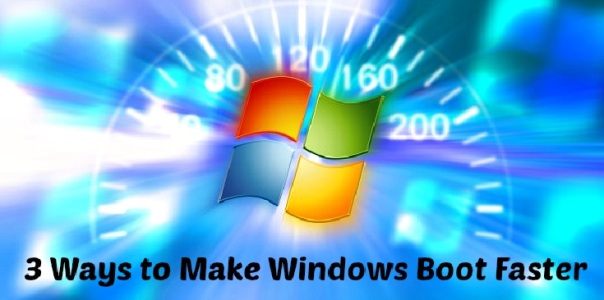 Method 1: Disabling Unnecessary Startup Programs
Method 1: Disabling Unnecessary Startup Programs
This is one of the first things Techie-Geeks do to speed up their computers. Since it’s totally free, it’s a cheap solution to speed up your computer.
You may have noticed a phenomenon that the more software you put on your computer, the slower Windows boots up. Windows keeps a list of programs to run at start up. As you install more programs, they can add themselves to this list making it quite long and resource expensive to boot Windows. Luckily, Windows comes with a tool called “MSConfig” that allows you to disable programs to run at start up, allowing you to have more resources at start up and a shorter boot time.
Note: MSConfig is responsible for more than just what programs start up. Just be careful when using it and all will be fine.
If you are using windows 7, Open the Start Menu, type “msconfig” in the search box, and click on “msconfig.exe” to open the tool.
When the System Configuration Window appears, click on the “Startup” tab to go to a list of all the programs that execute when Windows starts. Checked boxes imply that the program will run at start time, and unchecked boxes imply that the program will not run at start time. Uncheck boxes next to programs you want to stop running at start time and click OK when you are done.
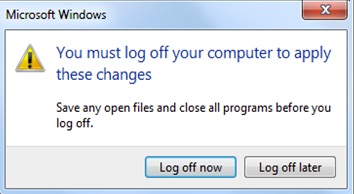
A dialog box will appear to tell inform you that you need to restart your computer in order for the changes to take affect. You have the option to restart now or later. You can click “Restart” to see the effect immediately, or click “Exit without restart” to continue working on your computer.
Method 2: Defragmenting Your Hard Drive
Defragmenting your hard drive simply means to reorganize the contents your hard disk so that data can be read from it faster. Optimizing your hard drive can give you results if you haven’t defragmented it in a while. Although in most cases the defragmenting the hard drive doesn’t improve the boot speed considerably, it is a free solution and is worth giving a shot.
If you’re using Windows 7, Simply type in “Disk Defragmenter” in the Start Menu’s search box to locate your Disk Defragmenting tool and click on Disk Defragmenter to open to tool.
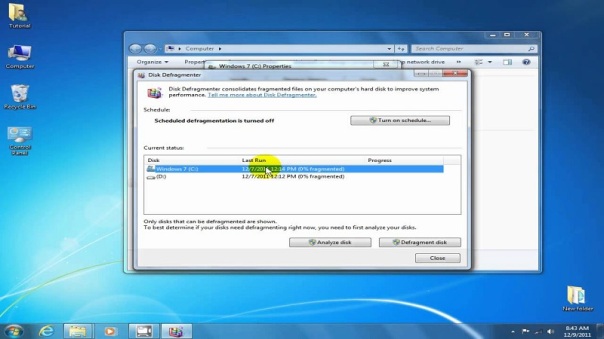
Once you’ve opened the Disk Defragmenter, select the disk you want to optimize under “Current Status”. You can click the “Analyze Disk” button to check whether or not you need to defragment your disk. To defragment a disk, click the “Defragment Disk” button.
Note: the process can range from minutes to hours depending on how fragmented your hard disk is. However, you will still be able to use your computer while the disk is being defragmented. If you do not have Windows 7 and are having trouble locating the tool, try exploring your start menu through the following path: Start Menu > All Programs > Accessories > System Tools > Disk Defragmenter
Method 3: Upgrading Your Hardware
When upgrade memory, first be sure you know what you need to get the results you’re looking for. Usually, having a shortage of RAM is what creates the slow results you’re noticing. However, having insufficient hard drive space can contribute to a slow computer.
Shortage of RAM (Random Access Memory)
Having a shortage of RAM is the most common reason for a slow computer. Newer operating system such as Windows 7 require 1 GB of RAM for a 32-bit OS or 2 GB of RAM for a 64-bit OS to work. It is the bare minimum requirement to get you going and perform basic tasks such as surfing the web or editing a word document.
These days, experts typically recommend you to have at least 4 GB of RAM to really get the most out of your system. Once you start trying to play basic games, edit images or photos, or even watch movies, you may begin to start noticing your computer struggling to perform.

The reason behind this is because once you reach a critical point and fill up your RAM, your computer starts swapping RAM memory with your hard drive. This is a big deal because the speed difference between RAM and your hard drive is huge. When it comes to speed, RAM is like a hot new Ferrari and your hard drive is more like a 2 year old’s tricycle. Your pizza can be delivered by Ferrari or by tricycle, but you’ll definitely notice a difference in performance
You can check if this is the problem you’re facing by checking your memory performance on Windows Task Manager. Simply press Ctrl+Shift+Esc to summon the Windows Task Manager and click on the “Performance” tab.
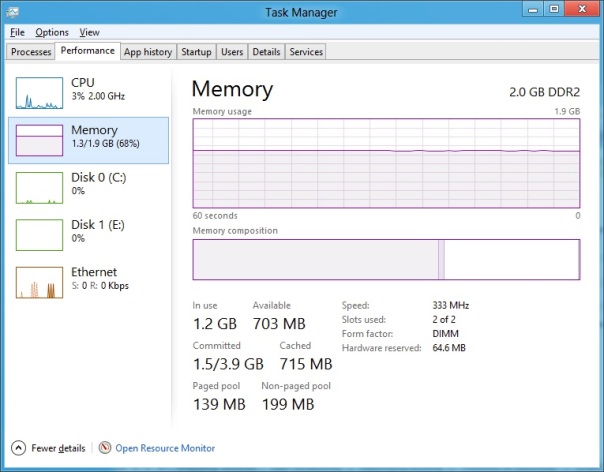
The Memory Chart will give you a visual idea of how your memory is being used. On the bottom of the window you can see the percentage of used Physical Memory. Also you can find out how much memory is Free under the ‘Physical Memory’ section. You know you’ve found the culprit if your RAM usage chart is maxing out (the green bars are near full) and your free Physical Memory is reading in the low double or triple digits. If your computer already has everything you want in it (eg. pictures, files, personally installed software) investing in RAM is usually best option. You can bring out a smoother, faster, more enjoyable experience from existing your system without the frustrations and inconveniences that come with purchasing a new computer.
Insufficient Hard Drive Space
The amount of disk space you have available can contribute to a slower system. Having disk space available is like having space for your system to breath.
Imagine you’re being yelled at to clean your room, the dog is barking outside while chasing your pizza delivery guy frantically banging his fist on the door screaming for help, your home and cell phones are ringing constantly, and the baby woke up from all the noise and is now wailing. If you don’t take a second and breathe before attempting to handle everything at once, chances are you’ll go into a breakdown and cry.
The same is with your system. When your RAM is filled up, your system uses your hard drive disk space to take a second to breathe before it can get to work. The less disk space it has to take a breather, the sloppier it performs. And at some point it gets so overwhelmed that it just crashes.
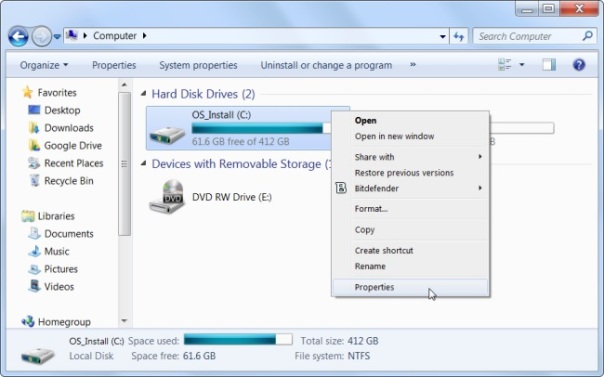
The amount of Hard Drive space available usually isn’t an issue regarding the performance of your system. However, depending on what you require from your machine, your RAM can reach its capacity from normal use.
When your disk space is full, boot time can take twice as long and it can take over 10 times longer to open Internet Explorer 9. To find out how much disk space you have remaining. To check how much space your hard drive has remaining, open the Start Menu and type in Computer in the Search Box.
Under ‘Hard Disk Drives‘, you should be able to see the amount of space remaining on your hard drive.
Using a stoplight analogy:
- With 25% disk space remaining or more, you’re in the green and good to go.
- With 10% remaining, the yellow light is flashing and it’s time to start considering upgrading your drive.
- If you’re nearing 1% remaining, your computer should be obnoxiously showing you the “Low Disk Space” balloon you’re looking at a red light. Cross this light only if you want to crash.
Is it Time for You to Invest in New Computer Hardware?
If the free solutions (disabling unnecessary startup programs and defragmenting your drive) did not give you the speed boost you’re looking for, it may be time to upgrade your hardware.
Posted on November 20, 2013, in Computer Hardware and tagged Acer, Apple, Dell, hard drive, hdd, HP, IBM, Lenovo, memory, Samsung, sdd, Sony, Sun, Toshiba Gateway. Bookmark the permalink. Leave a comment.
Leave a comment
Comments 0